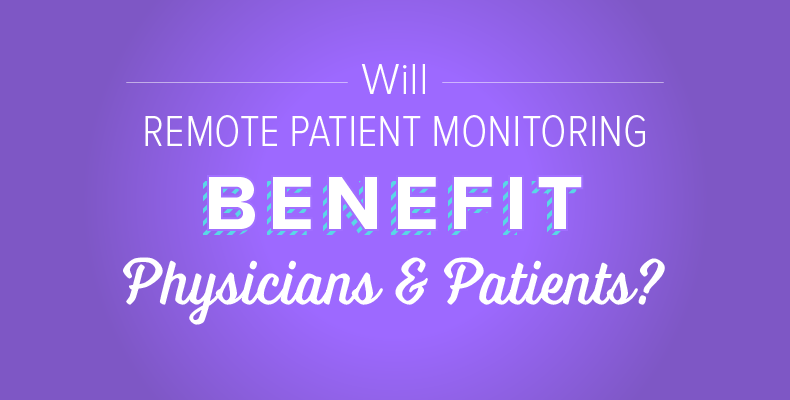
Remote Patient Monitoring (RPM) is the next big thing in patient care, and as such, it is revolutionizing how healthcare is provided by private healthcare physicians, while also significantly enhancing associated billing practices.
RPM involves the use of health sensors, a technology that has been used and perfected in mainstream medical care. These sensors are attached to the body, to read and transmit vitals. The sensors allow patients to be proactive about their health.
RPM is made up of several high-end technologies. It is helping caregivers gain access to health statistics for their patients in real-time, while also cutting care costs and leading to better doctor/patient relationships. Billing practices become more accurate and less time-intensive as a result.
The application depends on the disease and parameters that need to be monitored. The technology utilized in making RPM usable for a variety of patients in different circumstances comprises of the following components:
- Centralized Repository that stores data collected from patients using the sensors. This is where healthcare providers, various diagnostic applications and consequently, the billing agencies, can access important data regarding care provided.
- Sensors are needed to quantify and measure physiological parameters on a patient. These are enabled using wireless communication technologies.
- Local data storage usually happens at the patient site. This is the interface between the centralized repository and the sensors.
- Diagnostic software is a locally installed application that analyses the data collected and then creates the necessary treatment recommendations and alerts.
Real-Time Patient Monitoring – Benefits for Physicians
As telehealth continues to make real headway into mainstream medical care, private practices are increasingly reaping the many benefits of remote patient monitoring (RPM). Here are some of these benefits:
- Ease of access to patient data
- Ability to deliver higher-quality care to more patients with a lower risk of burnout
- Lower costs and higher efficiency
Remote Patient Monitoring technology has completely changed the way healthcare is being delivered across all channels in the United States, as well as the world at large. This emerging technology brings with it many connected tools that are making life easier for care providers.
Patients, elders and even clinical study participants won’t need to crowd the waiting area at their doctor’s practice to provide updates on their condition. It can happen at the touch of a button. Regular checkups can be replaced with round-the-clock monitoring. This leads to better and more timely care provision for patients with unique medical conditions, helping them avoid medical emergencies.
Real-time monitoring of chronic illnesses such as cardiovascular diseases, which is one of the leading causes of deaths in the US, perhaps is the most promising benefit of RPM. Uninterrupted monitoring of various vitals can be beneficial for heart patients and can help them recover following a heart attack or stroke.
Remote Patient Monitoring – Benefits for Patients
Better technological solutions are making lives more comfortable for patients as well. Innovations in RPM have helped them receive:
- Better access to quality healthcare
- Peace of mind and daily assurance
- Improved support and feedback
- Patient education
There is no denying the fact that it is increasingly difficult for those in need of healthcare to access their preferred physicians. Remote monitoring helps increase the work capacity of physicians so they can provide treatment to more people at a time. As more healthcare providers open their businesses to the emerging RPM technology, patients across the nation will gain better access to healthcare right from their own homes.
In addition to better access to care, patients also enjoy an improved quality of care, due to the RPM advances. Not only can they connect instantly and directly with their physicians, but also enjoy less waiting times, or getting stuck in traffic or the emergency room.
Physicians can access relevant patient data in real-time, making their daily routines more efficient. This eases the possibility of burnout — resulting in apparent benefits to patient care.
However, more importantly, useful RPM programs have helped engage patients and allows them to be more accountable for their own health. It’s not an intimidating technology that should be feared; instead, RPM is an easy-to-use technology that allows patients to easily accept it. Most RPM modules come complete with user-friendly interfaces that can be installed on a tablet or smartphone for quick access.
According to studies conducted by the Pew Research Centre, 92% of all Americans have smartphones, while 45% have access to a tablet computing device. Modern RPM systems can be accessed on these devices via an app. This leads to increased patient comfort while also ensures better patient engagement. Contrary to popular belief, this support and familiarity easily extend to seniors as well.
The best news about these remote monitoring systems is that it gives patients the ability to take control of their healthcare. It enables them to be more involved in the decision-making process and empowers them to make decisions regarding their own healthcare. They are also more relaxed regarding the resulting costs of healthcare. Since RPM is also a means to critically document every step of the treatment and recovery process, it also makes billing more reliable. Instead of resisting caregiver recommendations, patients gain a better understanding of why and how decisions about their own health are made. This means that patients are more likely to embrace these decisions, and improve their own health in the process.

James Smith is an enthusiastic writer who loves to write about opportunities that make people aware of his many passions in fields such as health, fitness, lifestyle and everyday life. Currently, he is a blogger associated with Centra Care, an urgent care centre in Tampa, FL and other cities in the vicinity such as Conway, Longwood, Orange Lake and others. Follow James on Twitter @jamessmith1609

